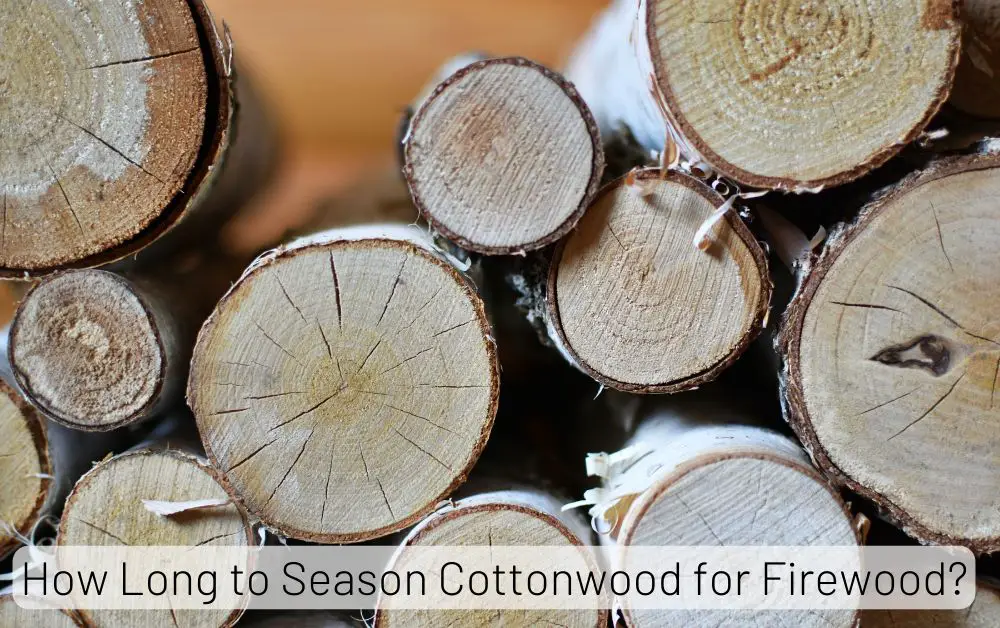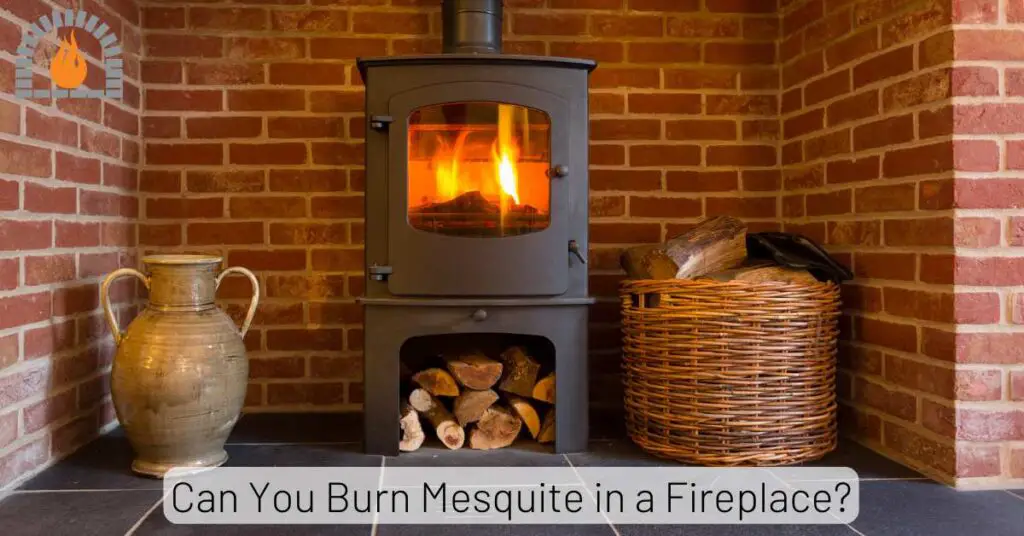In rustic warmth and timeless charm, few things evoke the quintessential image of a crackling hearth like oak firewood. Renowned for its dense structure, slow-burning properties, and captivating aroma, oak has long been revered as the premier choice for fueling fires and infusing spaces with an enchanting ambiance.
Whether it’s the centerpiece of cozy winter nights or the secret ingredient to perfecting culinary masterpieces, the allure of oak firewood transcends mere functionality, embodying a storied tradition that intertwines with our collective human experience.
Join us on a journey through the rich history, remarkable qualities, and enduring allure of oak firewood, where every member tells a tale of warmth, comfort, and timeless elegance.
Overview
With a high BTU output, oak firewood provides long-lasting heat, making it ideal for keeping your space warm and cozy during chilly nights. Oak’s dense nature results in minimal smoking, popping, and sparking, ensuring a safer and more enjoyable fire experience. Its low moisture content facilitates efficient seasoning, allowing for quicker ignition and sustained combustion.
Oak’s firewood favorable splitting characteristics make it easier to manage, whether chopping it yourself or purchasing pre-cut logs. From its impressive heat output to its ease of handling, oak firewood remains a top choice for those seeking reliable, high-quality fuel for their fires.
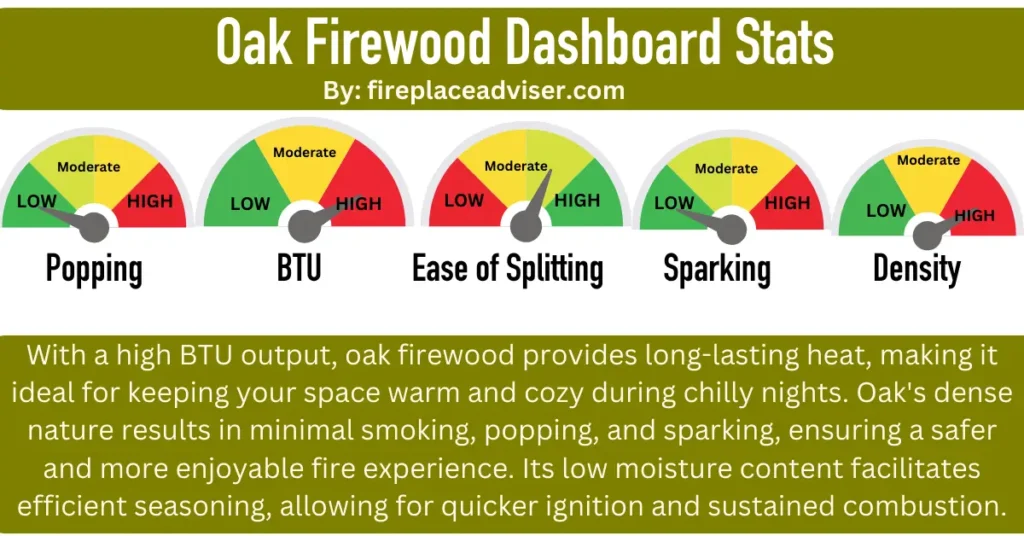
| Characteristic | Description |
|---|---|
| BTU | High – Oak firewood typically has a high heat output, making it efficient for heating. |
| Smoking | Low to moderate – Oak produces minimal to moderate smoke when burned. |
| Popping | Moderate – Oak firewood may produce some popping or crackling sounds when burning. |
| Sparking | Low – Oak firewood generally produces few sparks when burning. |
| Seasoning | Moderate – Oak firewood requires moderate time for seasoning, typically 6-12 months. |
| Splitting | Moderate to Difficult – Oak can be challenging to split due to its density and hardness. |
| Moisture Content | Low to moderate – Oak firewood typically has a moisture content ranging from 20% to 30%. |
| Density | High – Oak is a dense hardwood, providing long-lasting and consistent heat. |
| Availability | Widely available – Oak is a common type of firewood in many regions. |
| Aroma | Pleasant – Oak produces a sweet, aromatic scent when burned. |
Is Oak Goof Firewood?
Yes, Oak is excellent firewood! It burns hot and slow, making it ideal for keeping a fire going for a long time and renowned for its excellent burning qualities and is widely used for heating and cooking purposes. Plus, oak produces a steady flame and generates a lot of heat, making it perfect for heating your home during the colder months.
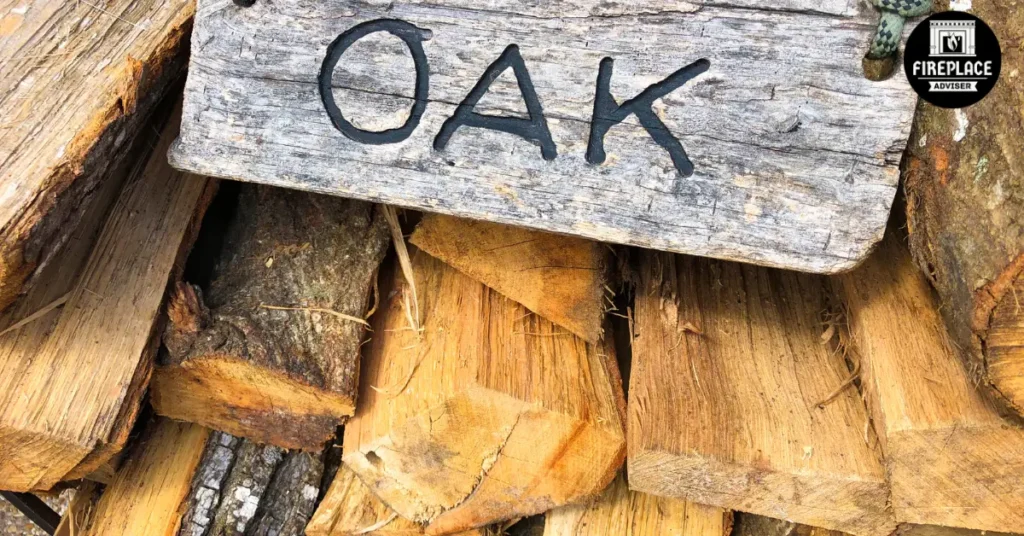
Oak Firewood Characteristics
Density
Oak wood is dense, which means it burns slowly and produces a steady, long-lasting heat. This density is due to the tight growth rings characteristic of oak trees.
As a result, oak firewood provides efficient warmth and requires less frequent replenishment than softer woods.
Heat Output
Oak firewood generates substantial heat when burned, making it ideal for heating larger spaces or maintaining a consistent temperature in a room.
The high heat output is especially beneficial during colder months when significant warmth is required.
BTU (British Thermal Unit) Rating
Oak typically has a high BTU rating, indicating its ability to produce a considerable amount of heat per wood unit.
This makes it a desirable choice for wood stoves, fireplaces, and other heating appliances where efficient heat production is essential.
- Oak, White: 25.7 million BTUs per cord
- Oak, Red: 24 million BTUs per cord
Longevity of Burn:
Due to its dense nature, oak firewood burns slowly and steadily, extending the duration of each fire. This longevity reduces the need for frequent refueling and helps maintain a consistent temperature over an extended period.
As a result, oak is often favored for overnight burns or extended heating needs.
Hot Coals Formation:
Oak as firewood produces long-lasting hot coals, which are beneficial for cooking and grilling.
The dense wood burns down to a bed of embers that retain heat well, allowing for even cooking temperatures and enhanced flavor in grilled or smoked foods.
Low Smoke and Spark Production:
Oak is known for producing minimal smoke and sparks when burned, creating a cleaner and safer burning experience.
This characteristic is particularly advantageous for indoor use in fireplaces or wood stoves, where smoke and sparks can pose a risk or cause discomfort.
Aroma and Flavor:
When used for cooking or smoking foods, oak imparts a distinct and pleasant aroma and flavor. It enhances the taste of grilled meats, vegetables, and other foods, adding depth and complexity to culinary creations.
Availability and Accessibility:
Oak is widely available in many regions, making it a readily accessible firewood option for homeowners and businesses.
Its popularity and abundance ensure that oak firewood is often easy to obtain, whether purchased from suppliers or sourced from fallen trees.
Resilience to Moisture:
Oak firewood has a natural resistance to moisture, allowing it to burn efficiently even when slightly damp. This resilience makes oak a reliable choice for outdoor fire pits or camping trips where firewood may be exposed to varying weather conditions.
Cost Effectiveness
Investing in oak firewood offers compelling long-term savings. While the initial purchase cost might seem higher than some alternatives, oak’s slow-burning nature ensures prolonged heat output.
Its density and high energy content mean you’ll need less wood to maintain warmth compared to softer woods. This translates to reduced frequency of replenishment and ultimately, lower expenses over time.
The durability of oak also minimizes the need for frequent replacements, further enhancing its cost-effectiveness.
Related Post: BTU To Sq Ft Chart & Calculator
Red Oak vs. White Oak
Oak firewood comes in two primary varieties: red oak and white oak. Each type offers distinct qualities in terms of burning characteristics and heat output.
Red oak tends to burn hotter and faster, making it ideal for quickly warming up a room or a fire pit. On the other hand, white oak burns slower and produces longer-lasting heat, making it suitable for sustained warmth over a more extended period.
The choice between red and white oak often depends on personal preference and specific heating needs.
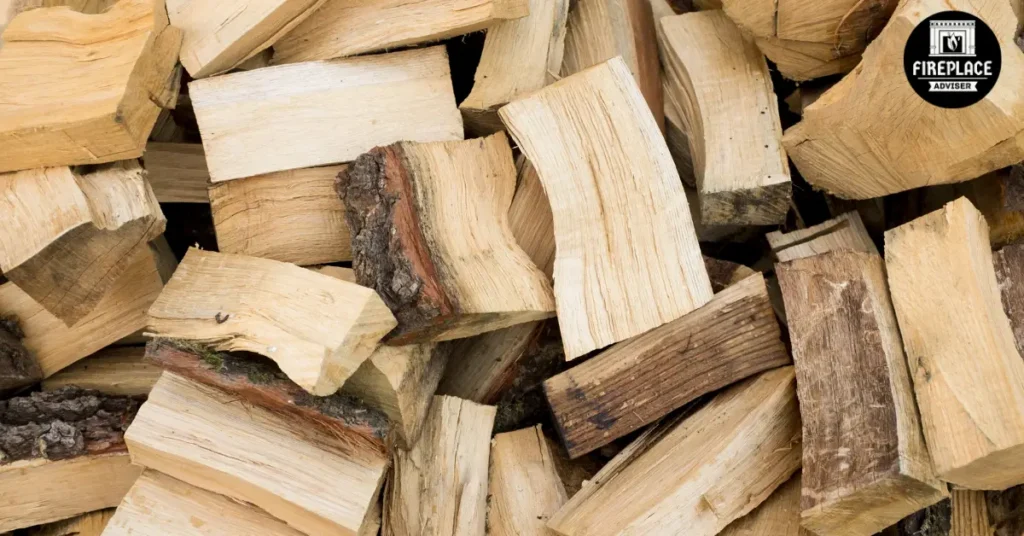
Comparison with Other Firewood Types
| Firewood Type | Density | Heat Output | Burn Time | Ease of Splitting | Fragrance |
|---|---|---|---|---|---|
| Oak | High | High | Long | Moderate | Earthy |
| Maple | High | High | Long | Moderate | Mild |
| Birch | Medium | Medium | Medium | Easy | Mild |
| Ash | High | High | Long | Easy | Neutral |
| Cherry | Medium | High | Medium | Moderate | Sweet |
| Pine | Low | Low | Short | Easy | Strong |
Pros of Oak Firewood
- High heat output
- Long-lasting burn
- Pleasant aroma
- Minimal sparking
- Widely available
- Suitable for cooking
Cons of Oak Firewood
- Slow seasoning process
- Difficult to split
- Expensive
- Heavy
- Produces ash residue
- Not ideal for quick fires
Related Post: BTU To Sq Ft Chart & Calculator
How to Properly Season Oak Firewood.
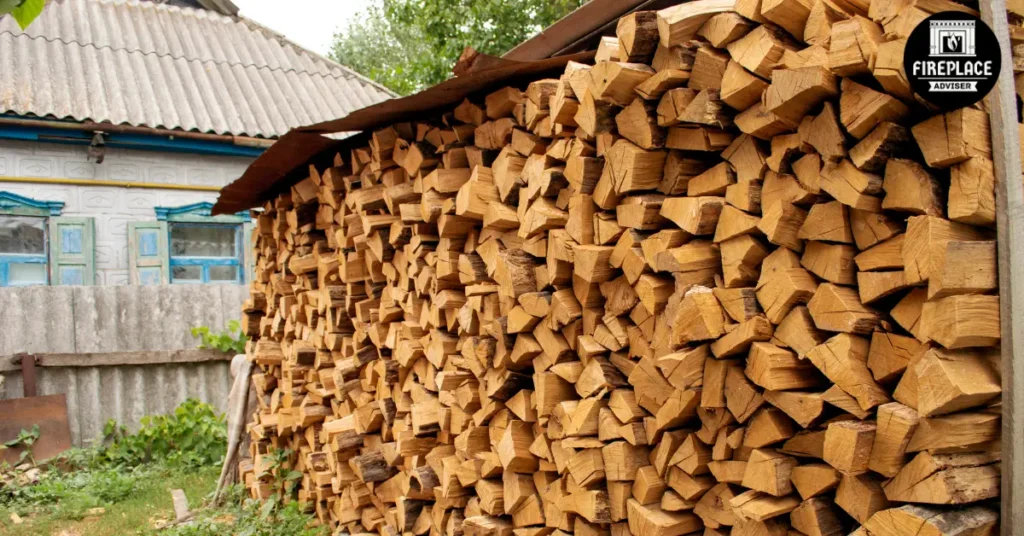
Selecting and Cutting Oak Logs:
The first step in adequately seasoning oak firewood is to select suitable logs and cut them to the desired size. Choose oak logs that are healthy, free from rot, and have been recently harvested. Cut the logs into manageable lengths using a chainsaw or a handsaw, ensuring they are uniform in size for consistent drying.
Stacking and Storing Oak Firewood:
- Once the oak logs are cut, stack them in a single row or crisscrossed layers to allow for proper airflow.
- Place the stack in a dry, well-ventilated area, such as a woodshed or an open-air storage rack.
- Elevate the stack slightly off the ground using pallets or scraps of wood to prevent moisture absorption from the soil.
- Cover the top of the stack with a tarp or a roof to protect the wood from rain while still allowing air circulation.
Monitoring Moisture Levels:
Throughout the seasoning process, regularly monitor the moisture content of the oak firewood using a moisture meter. The ideal moisture content for correctly seasoned firewood is 15-20%.
Check the wood periodically, especially during wet or humid weather, and rotate the logs within the stack to ensure even drying.
Once the oak firewood reaches the desired moisture level, typically after six months to a year of seasoning, it is ready for efficient and clean-burning fires.
FAQs
Is oak firewood better than ash?
Both oak and ash are excellent for firewood, as they burn well and produce ample heat. However, some prefer oak for its longer burning time and slower, more even combustion, while others favor ash for its quick ignition and pleasant aroma.
Is oak more expensive than ash?
In general, the price of oak firewood tends to be higher than ash firewood due to factors such as demand, availability, and the density of the wood. Oak is known for its durability and density, making it harder to split, and requires more time to season properly, contributing to its higher cost than ash. However, regional variations in pricing may occur based on local supply and demand dynamics.
What burns hotter, oak or ash?
Oak typically burns hotter than ash. Oak is denser and has a higher energy content per unit volume than ash, resulting in a longer-lasting, hotter fire. This higher density also means that oak firewood will produce more coals, allowing for sustained heat output over a more extended period than ash.
Is oak firewood suitable for cooking and smoking foods?
Yes, oak firewood is commonly used for grilling, smoking, and barbecuing due to its mild flavor and consistent heat.
How long does it take for oak firewood to season properly?
Oak firewood typically requires at least six months to a year of seasoning to reach optimal moisture levels for efficient burning.
Can I use green oak firewood immediately after cutting?
Burning green oak firewood is not recommended, as it contains high moisture content, leading to poor combustion and increased creosote buildup.
Does burning oak firewood contribute to deforestation?
Sustainable harvesting practices ensure that oak firewood is sourced responsibly, minimizing the impact on forest ecosystems.
Are there any special considerations for storing oak firewood indoors?
When storing oak firewood indoors, ensure it’s well-seasoned and adequately dried to prevent mold growth and insect infestations.
Affiliate Disclosure: Fireplaceadviser.com is a participant in the Amazon Services LLC Associates Program. We may earn a commission when you click on certain links on this site and purchase.

Hello!! I am Jamal Khan. I often fix my home electric heaters and gas stove problems and research the common issues in the heating units to improve my knowledge and expertise. The aim of establishing fireplaceadviser.com is to share my expertise and knowledge with my audience.













